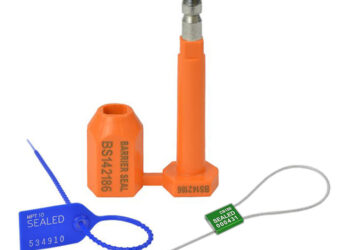In an increasingly interconnected global economy, the secure movement of goods across borders is of paramount importance. Ensuring the integrity and security of freight containers has become a critical concern for governments, businesses, and consumers alike. ISO 17712, a standard developed by the International Organization for Standardization (ISO), addresses these concerns by establishing guidelines for the mechanical seals used on freight containers.
Introduction to ISO 17712 Certification
ISO 17712 certification serves as a benchmark for the security and compliance of freight containers during transportation. The standard was introduced to counter the rising threat of tampering, theft, and smuggling of goods in transit. The certification sets out requirements for the design, testing, and implementation of high-security seals to prevent unauthorized access to containers. These seals are designed to deter tampering, providing evidence of any breach and helping to maintain the integrity of cargo.
Importance of ISO 17712 Certification
Obtaining ISO 17712 certification offers numerous benefits to supply chain stakeholders. Firstly, it instills confidence in customers and partners by demonstrating a commitment to ensuring the security of transported goods. The certification enhances a company’s reputation for reliability and compliance, thus attracting more business opportunities.
Secondly, ISO 17712 certification aids in meeting regulatory requirements. Customs authorities and trade organizations often require compliant seals as a prerequisite for international shipments. Adhering to ISO 17712 standards streamlines the customs clearance process and minimizes delays, avoiding potentially costly disruptions in the supply chain.
Key Elements of ISO 17712 Certification
To master ISO 17712 certification, it is crucial to understand its key elements:
- Seal Types: ISO 17712 classifies seals into three categories – “I”, “S”, and “H”. “I” seals are indicative seals, “S” seals are security seals, and “H” seals are high-security seals. Choosing the appropriate seal type depends on the level of security required for the specific shipment.
- Testing Procedures: The standard outlines rigorous testing procedures that seals must undergo to demonstrate their effectiveness against tampering. These tests include tensile strength, shear strength, impact resistance, and tamper-evidence assessments. Manufacturers must ensure their seals pass these tests to meet certification requirements.
- Documentation and Record-Keeping: Maintaining accurate records of seal usage, including their application and removal, is a crucial aspect of ISO 17712 compliance. Proper documentation enhances traceability and transparency, assisting in investigations in case of any security breaches.
- Training and Awareness: Adequate training for personnel involved in the application and removal of seals is essential. Employees should be aware of the correct procedures to ensure the integrity of seals and to identify any signs of tampering.
Conclusion:
ISO 17712 certification plays a pivotal role in enhancing freight security and ensuring compliance in international trade. Its comprehensive guidelines for high-security seals set a standard that helps prevent tampering, theft, and unauthorized access to freight containers. Companies that master ISO 17712 certification not only fortify their supply chains against security risks but also demonstrate their commitment to safe and reliable global trade. As the world continues to navigate complex supply chain challenges, ISO 17712 remains an indispensable tool for safeguarding the movement of goods across borders.












